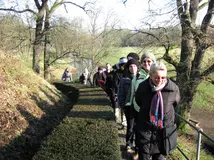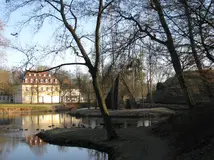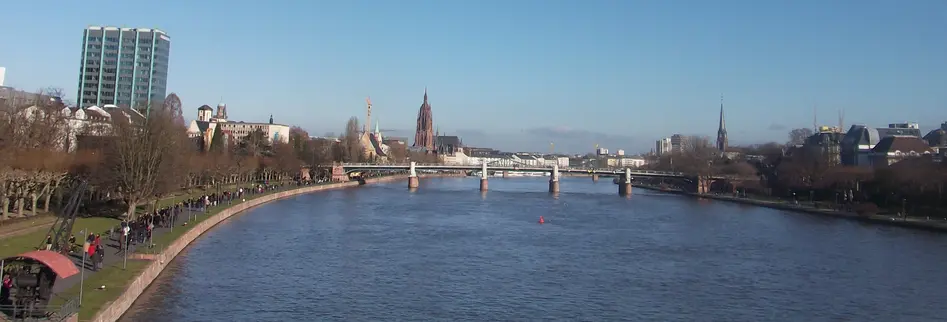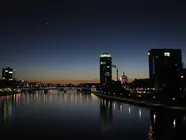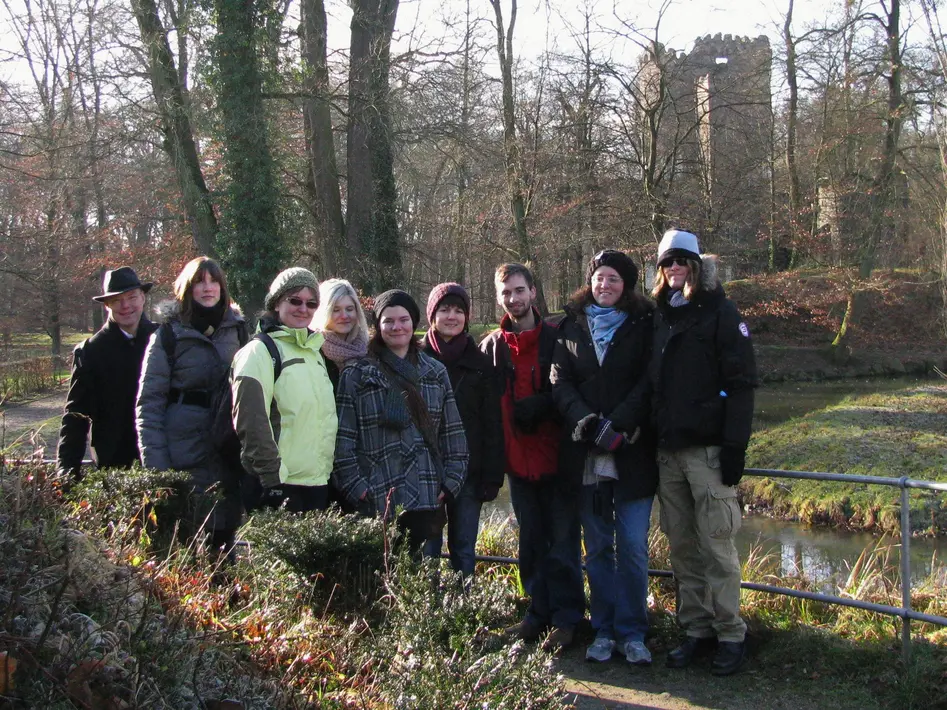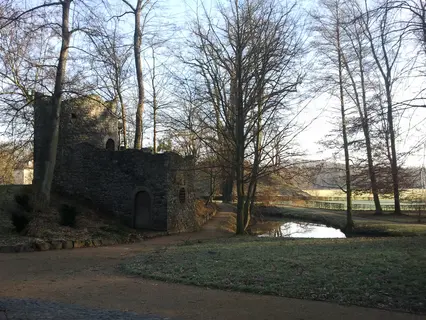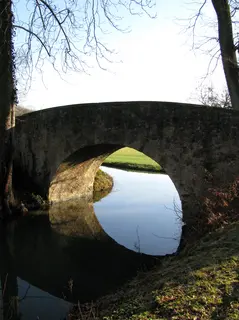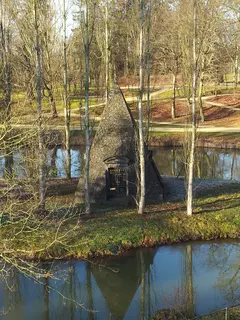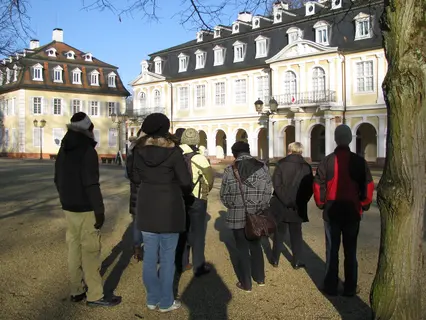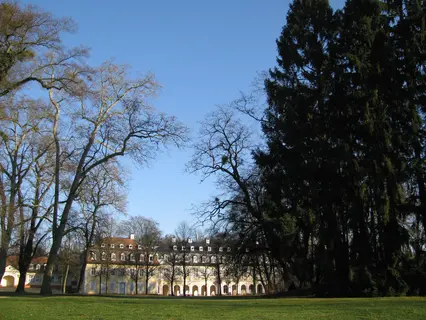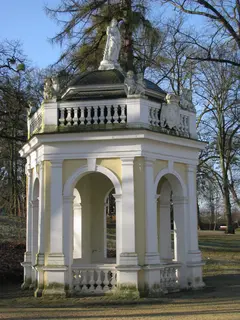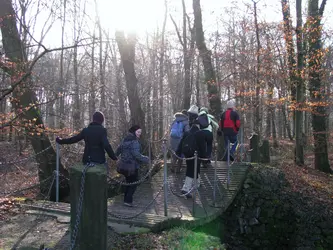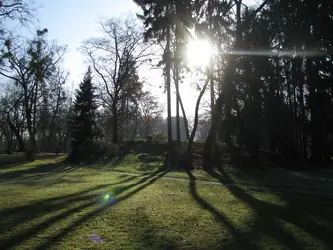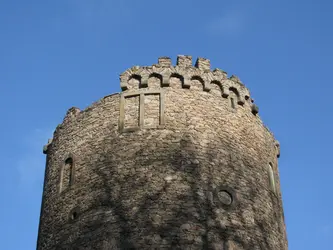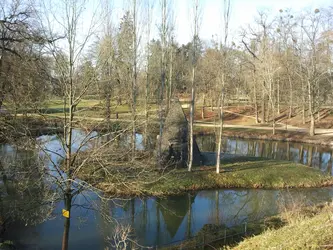Day Trip to Wilhelmsbad (Hanau) and Frankfurt/Main
By David Prichard (Sewanee, Tennessee) and Chiara Manghi (Bamberg)
On January 15th, 2012, participants of the class "Left in Ruins: German and American Romanticism" went on a field trip that consisted of two parts—a tour of the landscape garden at Wilhelmsbad, Hanau, to see and learn about artificial ruins, and a visit to the Städel Museum in Frankfurt to see the works of various German Romantic painters.
At Hanau-Wilhelmsbad station, the students and Dr. Nicole K. Konopka were met by Prof. Dr. Christoph Heyl, who taught at the English Department of BambergUniversity last year. We were then welcomed by our enthusiastic and knowledgeable tour guide, and we learned a lot about the history of the park, and the history of the man who commissioned it, Wilhelm I. von Hessen-Kassel.
The bath and its attending facilities, which were modeled after Bath, Somerset, were planned by the architect Franz Ludwig Cancrin; they included artificial ruins solely for decoration purposes, to make the area look more impressive. These ruins, however, have acquired a kind of legitimacy since. A small memorial shaped like a pyramid was built on an island in the park's main lake to immortalize Wilhelm's son Friedrich, who died in childhood.
The tower of the Burgruine, which also served as Wilhelm's private residence (even his wife, we learned, didn't stay there with him – it really was a lonely place), also passed through a period of actual ruin in which many of the interior furnishings disappeared. They have now been substituted with replicas of furniture, paintings and soft furnishings of Wilhelm's time. Of note is Wilhelm's particular connection to the American Revolutionary War, which he impacted by selling many of his men for use as soldiers (the famed Hessian mercenaries).
In the afternoon, we received a short, specialized tour on the subject of ruins at the Städel Museum Frankfurt, after which we had some time to wander through the museum on our own. Of particular note was the famous portrait "Goethe in der Campagna" by Johann Heinrich Wilhelm Tischbein that has acquired a rather curious reputation, not only for its large number of ruins but also for depicting Goethe with two left feet. We also saw several works by Caspar David Friedrich, which was very interesting because, as we learned in a film about Friedrich earlier in the semester, most of his paintings were destroyed in a fire just ahead of World War II.
We had previously compared American and German romantic painting in class, but it is quite a different experience to actually see the paintings in person. An unexpected boon was the small section dedicated to the photography of excavated ruins, which offered an entirely different perspective to the perhaps more imaginative portrayal of ruins through painting.
The majority of the class remained in the museum until closing time, after which we hurried back to the station, and took the train home. This trip was a wonderful opportunity for us to have a live experience of German romanticism, and for some of us, also the chance to see Frankfurt for the first time!
More pictures from the trip:
